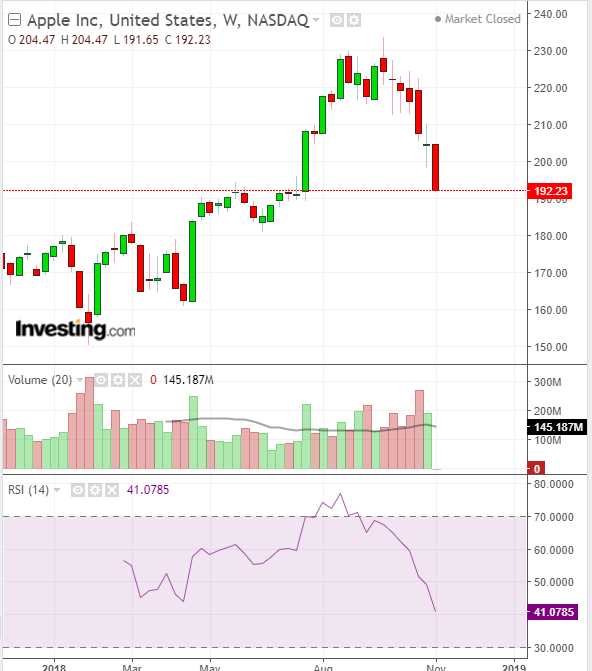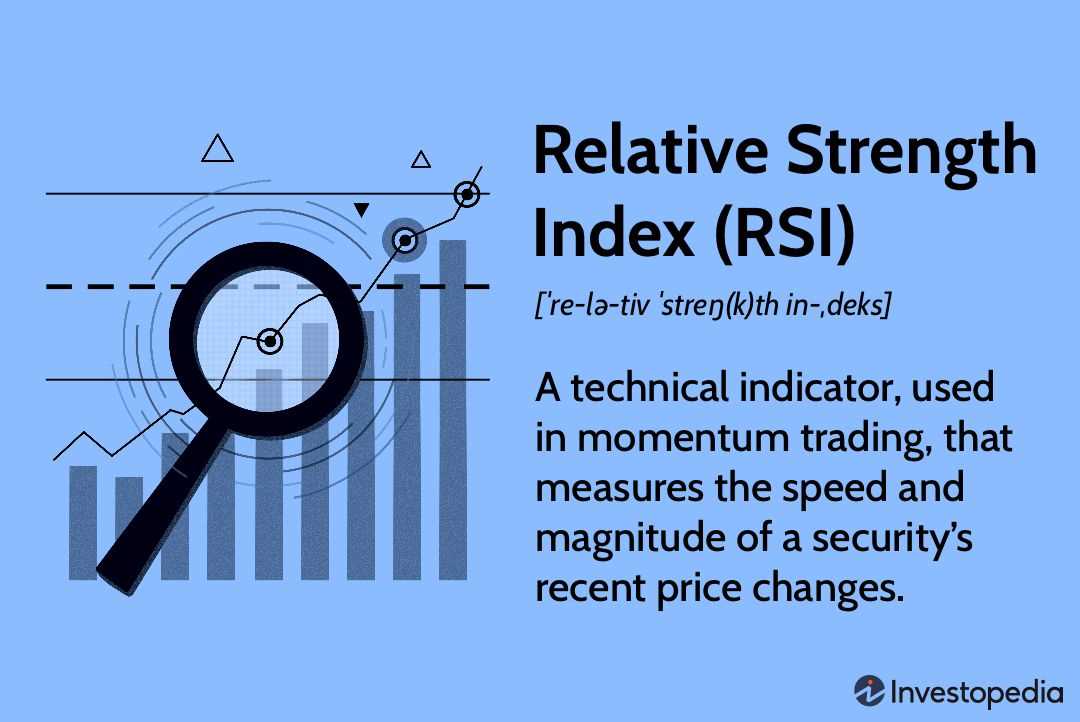What is Relative Strength?

Relative strength is a concept used in investing and stock analysis to compare the performance of a particular stock or investment to a benchmark or index. It provides investors with a way to assess the relative performance of a stock in relation to the overall market or a specific sector.
Relative strength is calculated by comparing the price performance of a stock to that of a benchmark over a specific period of time. This can be done using various technical indicators and tools, such as moving averages or price momentum indicators.
The relative strength of a stock can provide valuable insights into its potential for future price movements. If a stock has a high relative strength, it suggests that it has been outperforming the market or sector, indicating potential strength and positive momentum. On the other hand, a low relative strength may indicate underperformance and potential weakness.
Investors can use relative strength analysis to identify stocks that are showing strong performance relative to the market or sector, which may indicate potential investment opportunities. It can also be used to compare the performance of different stocks within the same sector, helping investors identify the strongest performers.
Relative strength is a key concept in investing and stock analysis that helps investors identify the strength or weakness of a particular stock or asset relative to other stocks or assets in the market. It is a technical analysis tool that provides valuable insights into the performance of a stock and its potential for future growth.
When analyzing relative strength, investors compare the price performance of a stock to a benchmark index or another stock in the same industry. This comparison allows them to determine whether the stock is outperforming or underperforming its peers.
Relative strength is calculated using various methods, such as comparing the price performance over a specific time period or using mathematical formulas like the relative strength index (RSI). The RSI is a popular indicator that measures the speed and change of price movements, providing a numerical value between 0 and 100.
By analyzing relative strength, investors can gain insights into the market sentiment towards a stock. If a stock has a high relative strength, it indicates that it is performing well compared to its peers and may continue to do so in the future. On the other hand, a low relative strength suggests that the stock is underperforming and may face challenges in the market.
However, it is important to note that relative strength should not be the sole factor in investment decisions. It should be used in conjunction with other fundamental and technical analysis tools to get a comprehensive view of the stock’s potential. Factors such as company financials, industry trends, and market conditions should also be considered.
How Does Relative Strength Work?
Relative Strength is a powerful tool used in technical analysis to compare the performance of a stock or investment against a benchmark or other stocks in the same industry. It helps investors and traders identify potential opportunities by analyzing the relative strength of a stock in relation to its peers.
The concept of relative strength is based on the idea that stocks that have been performing well in the past are more likely to continue performing well in the future, while stocks that have been underperforming are more likely to continue underperforming. By comparing the price performance of a stock to a benchmark or other stocks, investors can gain insights into the strength or weakness of the stock.
Relative strength is calculated by dividing the price performance of a stock by the price performance of a benchmark or other stocks in the same industry. The result is a ratio that indicates whether the stock is outperforming or underperforming its peers.
When the relative strength ratio is above 1, it means that the stock is outperforming its peers. This indicates that the stock has been gaining more value compared to others in the same industry. On the other hand, when the relative strength ratio is below 1, it means that the stock is underperforming its peers. This indicates that the stock has been losing value compared to others in the same industry.
Exploring the Mechanics of Relative Strength in Technical Analysis
Relative strength is a powerful tool in technical analysis that helps investors identify strong and weak stocks within a given market or sector. It measures the performance of a stock relative to other stocks or a benchmark index, providing valuable insights into the stock’s momentum and potential future performance.
When using relative strength in technical analysis, investors compare the price movements of different stocks or sectors over a specific period of time. This comparison is usually done using a ratio or a line chart, which allows for easy visualization and interpretation of the data.
Another approach to calculating relative strength is by comparing the price movements of two stocks within the same sector. This can help investors identify which stock is stronger or weaker relative to its peers. By analyzing the relative strength of different stocks within a sector, investors can make informed decisions about which stocks to buy or sell.
Relative strength can also be used to identify trends and potential reversals in the market. When a stock or sector consistently exhibits strong relative strength, it may indicate a bullish trend. Conversely, weak relative strength may suggest a bearish trend. By monitoring changes in relative strength over time, investors can spot potential opportunities and adjust their investment strategies accordingly.
Benefits of Using Relative Strength in Investing
Relative Strength is a valuable tool for investors as it provides a way to compare the performance of different stocks or investments. By analyzing the relative strength of a stock, investors can gain insights into its momentum and potential for future growth.
Another benefit of using relative strength is that it can help investors identify stocks that are in a strong uptrend. When a stock has a high relative strength, it indicates that it is outperforming its peers and may continue to do so in the future. This can be a useful signal for investors looking to capitalize on trends and ride the momentum of a stock.
Relative strength can also be used to identify stocks that are in a weak downtrend. When a stock has a low relative strength, it indicates that it is underperforming its peers and may continue to do so in the future. This can be a useful signal for investors looking to avoid stocks that are in a downward trend and potentially minimize losses.
Additionally, relative strength can be used to compare the performance of different sectors or industries. By analyzing the relative strength of stocks within a specific sector, investors can identify sectors that are outperforming or underperforming the overall market. This can help investors allocate their investments to sectors that have the potential for higher returns.
Overall, relative strength is a valuable tool for investors as it provides a way to compare the performance of different stocks or investments and gain insights into their momentum and potential for future growth. By using relative strength analysis, investors can make more informed investment decisions and potentially generate higher returns.
Why Relative Strength is a Valuable Tool for Stock Analysis

Relative strength is a valuable tool for stock analysis because it provides investors with a way to compare the performance of different stocks or sectors. By calculating the relative strength of a stock, investors can determine whether it is outperforming or underperforming the overall market or a specific sector.
One of the main benefits of using relative strength is that it helps investors identify stocks that have strong upward momentum. When a stock has a high relative strength, it means that it has been performing well compared to other stocks or the market as a whole. This can be a sign that the stock is in an uptrend and may continue to rise in price.
On the other hand, relative strength can also help investors identify stocks that are weak and may be poised for a decline. When a stock has a low relative strength, it means that it has been underperforming compared to other stocks or the market. This can be a sign that the stock is in a downtrend and may continue to fall in price.
Another benefit of using relative strength is that it allows investors to compare the performance of different sectors. By calculating the relative strength of different sectors, investors can identify sectors that are outperforming or underperforming the overall market. This can help investors allocate their capital to sectors that are likely to provide the highest returns.
Using Relative Strength in Portfolio Management

Relative strength can also be used in portfolio management to determine which stocks to buy or sell. By comparing the relative strength of different stocks, investors can identify stocks that are likely to continue to outperform and should be held in the portfolio. Conversely, stocks with low relative strength may be candidates for selling or reducing exposure.
Additionally, relative strength can be used to identify potential opportunities for diversification. By identifying sectors or stocks with high relative strength that are not highly correlated with the rest of the portfolio, investors can add diversification and potentially reduce risk.
Conclusion
Relative strength is a valuable tool for stock analysis because it allows investors to compare the performance of different stocks or sectors. By calculating the relative strength of a stock, investors can identify stocks with strong upward or downward momentum, compare the performance of different sectors, and make informed decisions about portfolio management. Incorporating relative strength into stock analysis can help investors improve their investment decisions and potentially enhance their returns.

Emily Bibb simplifies finance through bestselling books and articles, bridging complex concepts for everyday understanding. Engaging audiences via social media, she shares insights for financial success. Active in seminars and philanthropy, Bibb aims to create a more financially informed society, driven by her passion for empowering others.
